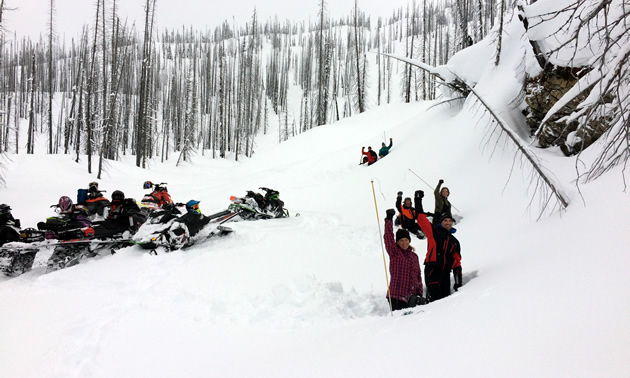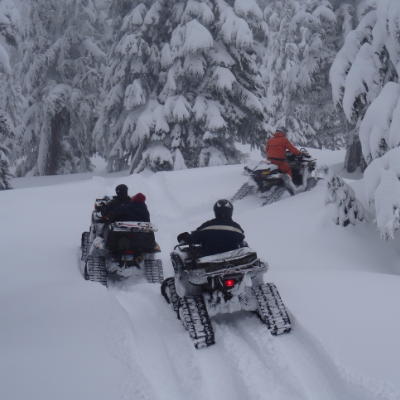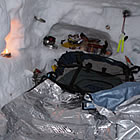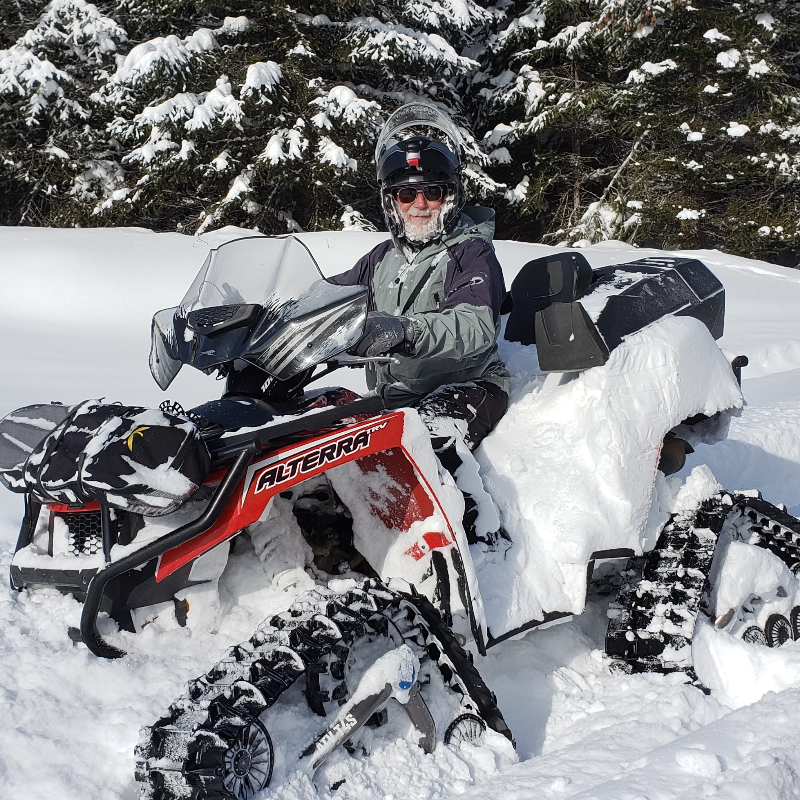What happens in an Avalanche Skills Training (AST) Level 2 course? That is a common question these days as more riders are now ready to bump up their game. We tweak and tune our machines to get better performance so why wouldn’t we do the same to our mental machines?
First of all, it’s important to know the differences between AST 1 and AST 2. Essentially, the AST 1 is a beginner course, introducing tons of new avalanche concepts to help riders recognize the hazards and stay safe by avoiding or seriously minimizing exposure to avalanche terrain. The intermediate level AST 2 builds practical skills on this foundation of avalanche awareness to help riders gather quality information to make better decisions regarding timing and terrain choices.
Almost all activities in our lives are a balance of risk versus reward. Your goal is to recognize what risks can be managed or avoided and to honestly judge and make a conscious decision whether we are comfortable with the known uncontrollable risks and then to be smart enough to realize that there are always unknown risks that we aren’t even aware of. No matter what our activity we need to maintain a margin of safety that accomplishes this, not only for our own risk tolerance but also to satisfy the risk tolerance of our family and friends, those on the trip and those waiting for us at home.
Opportunities to build these assessment and decision-making skills are built into the four-day AST Level 2 course. This terrain-based program typically exposes the group to three different riding areas. This helps riders appreciate spatial variability and learn how to factor that in when developing their own personal stability assessments. Ideally, we combine broad scale, regional forecasts (from Avalanche Canada and mountain weather sources) with recent, local knowledge (from Internet sources and local riders). It is topped off with fine scale, ongoing, personal field observations. AST 2 can help guide riders to seek out safe and controlled test sites when searching for signs of instability. It is quite amazing how much the snowpack and conditions can change (spatial variability) within a few miles when you know what to look for!
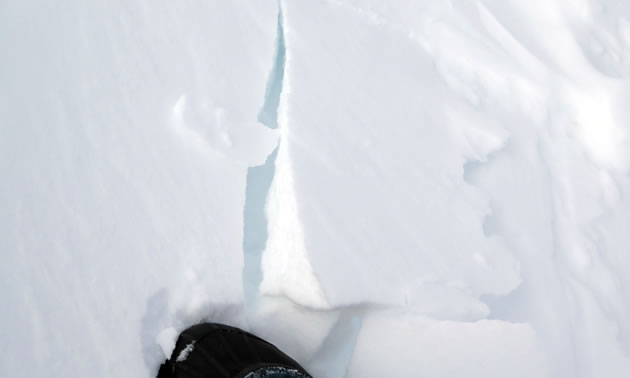
It’s all about putting snow on the terrain, but it doesn’t have to take a long time to gather the key points. Initially, an AST 2 instructor will explain the theory and demonstrate practical skills in a fully detailed snow pit.
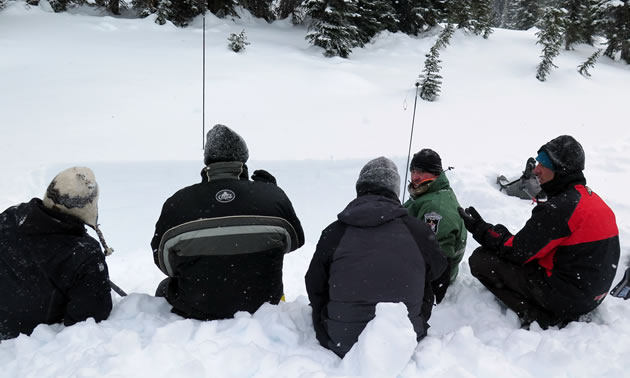
In the following field days, quick stability tests will be performed, hunting for relevant information specific to the day’s conditions. In some situations, just an avalanche probe or your sled might be used to gather snowpack data.
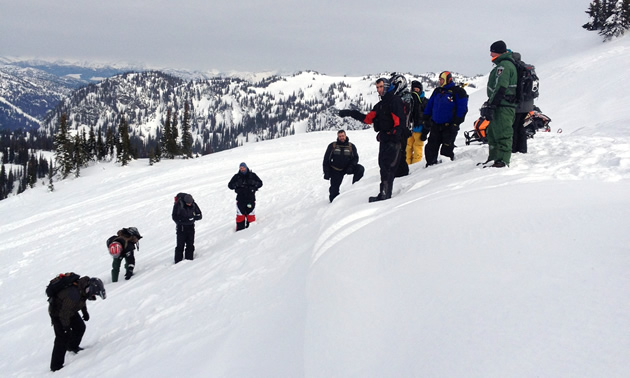
The reality of sledding is that we cover a lot of terrain in a day. This can be a disadvantage if we are riding untrained and unaware; it is similar to walking across a minefield without a map. The advantage of it, though, is that a trained rider can gather relevant observations from a number of locations. Multiple observations over a broader area give a better picture than detailed observations from a single point.
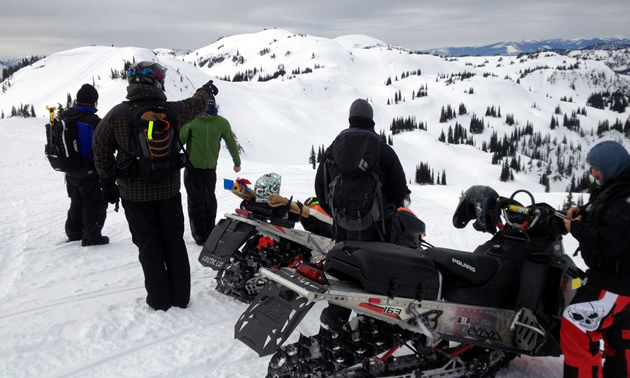
Covering large amounts of terrain safely requires that we have great group management skills and communication. Stopping to pause from good vantage points gives riders an opportunity to really take in the options before them. Discussions offer a chance for all riders to share their observations throughout the day, along with their opinions or concerns about the proposed routes.
During the debriefing that usually follows many serious avalanche accidents, survivors often remark that they had reservations about their group’s activities but didn’t make the effort to share them. “If only” can be a hard thing to live with. Pausing to make, or adjust, a group plan doesn’t take a lot of time if everyone is trained and speaking the same language (avalanche-speak!).
Each line that we select has its own level of avalanche exposure, technical nature, escape options and consequence. For example, a route might have lower avalanche exposure when compared to another but it might require more technical riding skills to execute. Getting stuck increases a rider’s exposure and vulnerability.
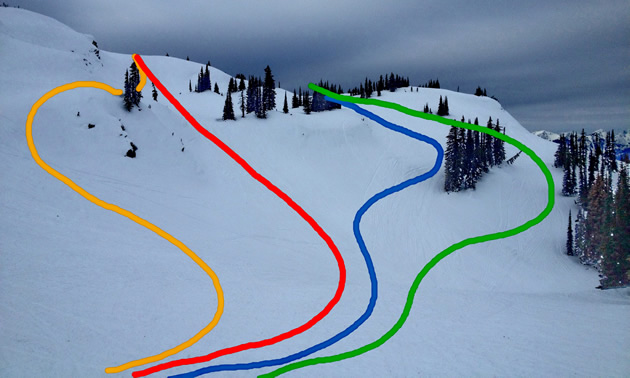
Here is a great formula to use when analyzing your choices: Risk = Consequence x Probability x Exposure x Vulnerability.
For more discussion on risk, check out Grant Statham’s Ted Talk. Statham is a Parks Canada Mountain Safety Specialist and he has played a key role in the development of our current avalanche safety tools—such as the Avalanche Bulletins, Danger Scale definitions, the Avaluator and Avalanche Terrain Ratings.
Managing risk wisely focuses the majority of our efforts on the prevention side: avoiding and minimizing the chances of triggering an avalanche. Avalanche airbags and avalanche rescue tools, like transceivers, shovels and probes, are backup plans for when everything else has failed.
With that in mind, AST 2 students are expected to arrive competent with their rescue skills for they will be tested in multiple scenarios to improve their teamwork and their ability to adapt to complicated scenes.
Watching demos and learning the theory is a start but improvements to technique and teamwork aren’t really possible until your crew commits to testing themselves in a practical setting where endurance is required.
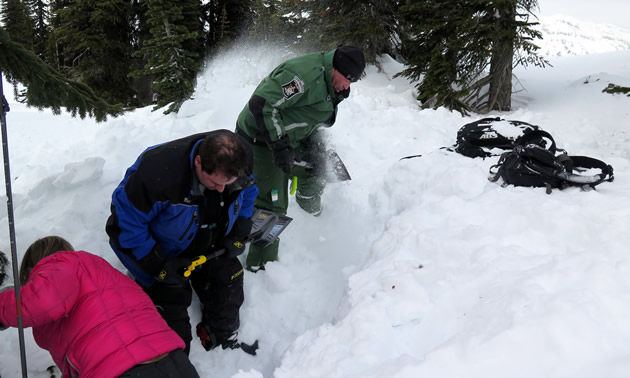
For best results gather up your riding group and invest in this program together. The course is a lot of fun, puts a whole new spin on the backcountry and it gives you an opportunity to widen your margin of safety. Classes are available in multiple locations throughout the season and custom courses can also be arranged.
Check out Zac’s Tracs website for a listing of classes that Zac’s and Trigger Point have partnered to provide.
